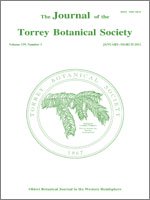The occurrence of colleters in Eudicotyledons is probably significantly underestimated as a consequence of the scarcity of structural studies directed towards them and the difficulties to determine their function. The present work aims to report the occurrence of colleters in Cariniana estrellensis and describe their morphological and functional aspects; for this, leaves at different stages of expansion were collected and studied using light, and scanning and transmission electron microscopy. The young leaves of C. estrellensis are involute and have colleters along the margins. These colleters appear to be functional in very young leaves and produce pectic secretions that spread over the entire leaf surface. The colleters are clavate and sessile, and have a central axis composed of parenchymatic cells as well as a secretory epidermis covered by a cuticle. The central cells have vacuolate cytoplasm with few organelles and reserve substances. The cytoplasm of the epidermal cells has numerous dictyosomes during the secretory phase, with few plastids and mitochondria. The secretions coating on the leaf surfaces appear to contribute to maintaining the water balance of the young leaves, thus the main function of the colleters in this species appears to be to protect the leaves from excessive transpiration loses.
How to translate text using browser tools
1 January 2012
Colleters in Cariniana estrellensis (Lecythidaceae): structure, secretion and evidences for young leaf protection
Elder Antônio Sousa Paiva
ACCESS THE FULL ARTICLE
Lecythidaceae
plant protection
plant-environment interactions
polysaccharide secretion





